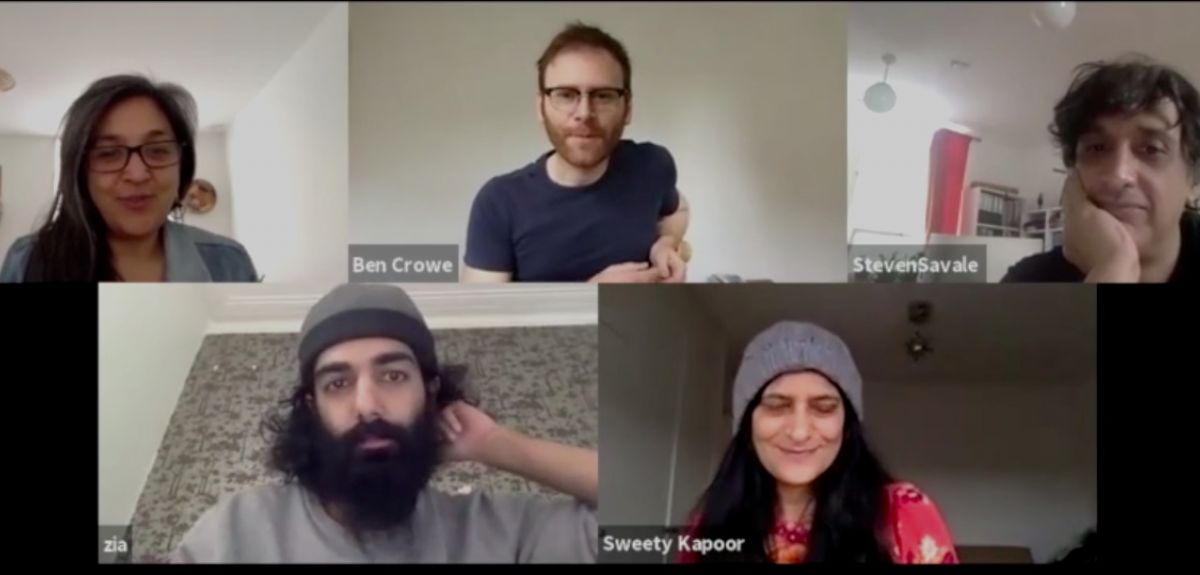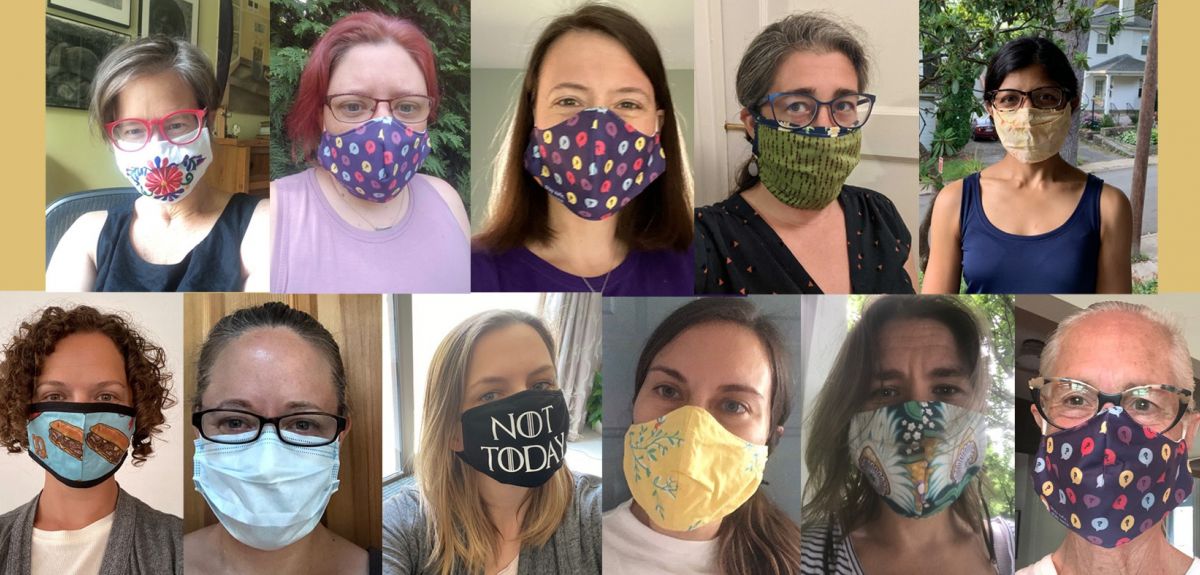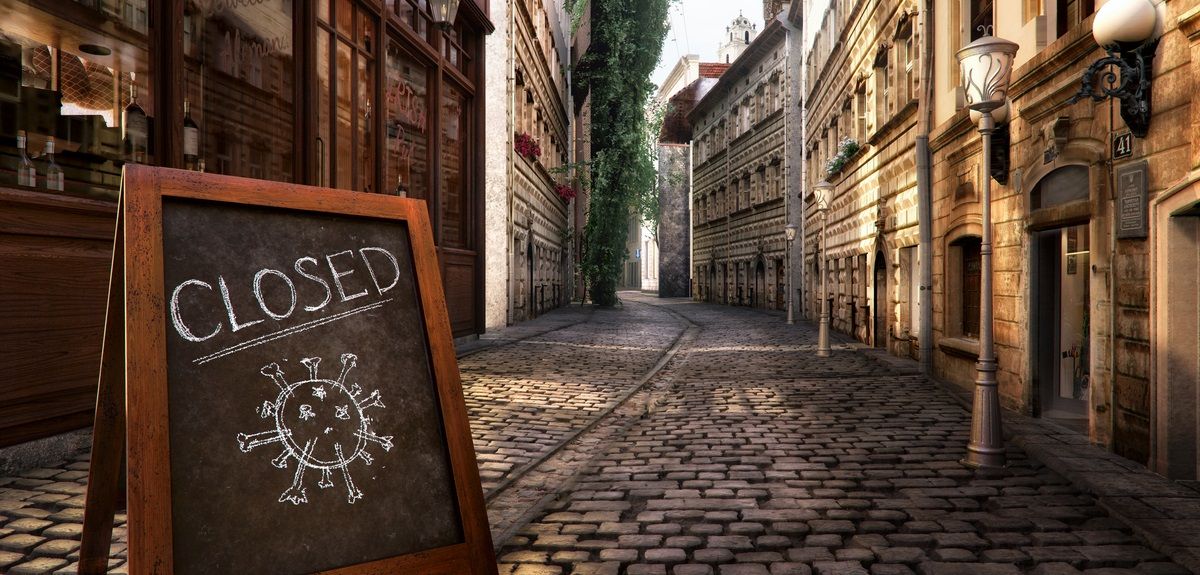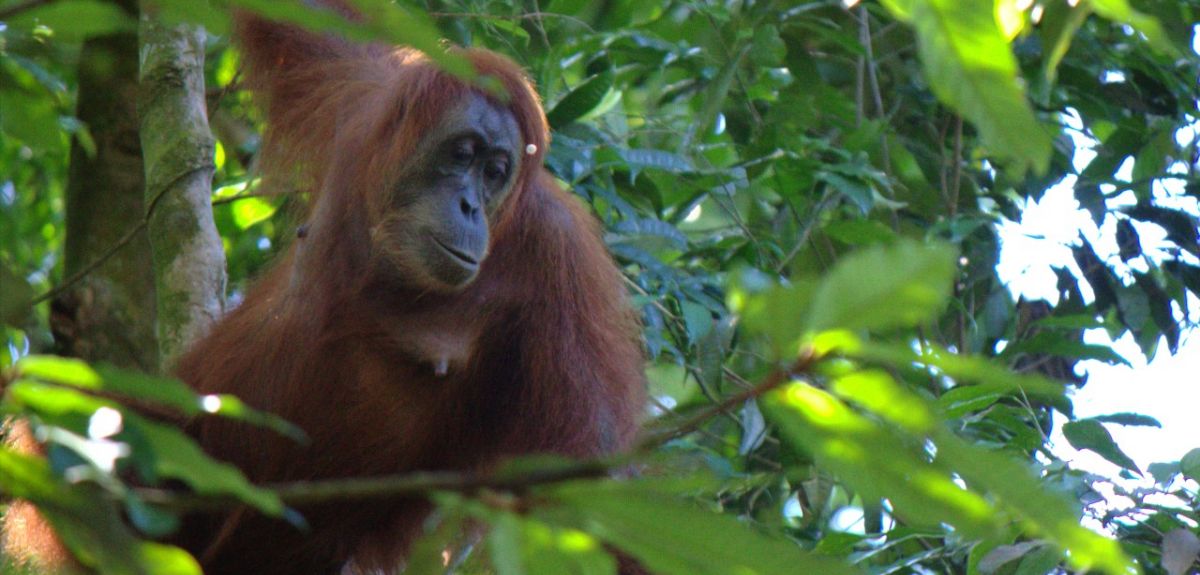Features
The pandemic is testing our societal structures like never before. To deal with it successfully, we need to think and act collectively, led by our key institutions. But at a time when unity is critical, are we about to see the effects of a long-standing and corrosive drip feed of mistrust?
The rapid development and testing of COVID-19 vaccines has been an extraordinary scientific undertaking. What happens now is arguably even more important: to ensure the vaccines are an effective intervention, people will need to take them. The practical challenges of manufacturing and dispensing millions of doses worldwide are of course immense, but societies also have to deal with the issue of vaccine hesitancy: the belief that a vaccine may be unnecessary, ineffective, or unsafe (and perhaps all three). Unsurprisingly, people who have these concerns may be reluctant to take a vaccine; they may even refuse it outright.
The pandemic has created the ideal conditions for mistrust of a COVID-19 vaccine to thrive. Part of the problem is the complexity and variability of transmission and infection.
Vaccine hesitancy isn’t new. However, the pandemic has created the ideal conditions for mistrust of a COVID-19 vaccine to thrive. Part of the problem is the complexity and variability of transmission and infection. The fact that you may not catch the virus if you break social distancing guidelines and that the illness may be mild if you do get it, has led some to conclude that there isn’t a real problem. The unprecedented speed with which the vaccines have been developed has also provoked worry: there are concerns that safety has been compromised or that the vaccine will be rolled out before we understand the extent and nature of possible side effects. Moreover, the Internet is awash with misinformation -- including conspiracy theories – about the virus, lockdown, and vaccinations.
Finally, it’s worth bearing in mind that this is all taking place after a long period in which trust in science, medicine, and key institutions has been steadily eroded. We can’t overcome the virus if health experts aren’t trusted; yet that’s exactly how many people have been primed to react.
In the Oxford Coronavirus Explanations, Attitudes, and Narratives Survey (OCEANS), we aimed to gauge the extent of COVID-19 vaccine hesitancy: how many people are sceptical about vaccination; whether particular sections of the population are especially reluctant; and, most importantly, why people are hesitant. 5,114 adults took part, representative of the UK population for age, gender, ethnicity, income, and region.
First, the good news: we found a substantial majority in favour of a COVID-19 vaccine, with 72% willing to be vaccinated. But this isn’t enough to be truly considered a consensus. 16% of the population are very unsure about receiving a COVID-19 vaccine, and another 12% are likely to delay or avoid getting the vaccine. One in twenty people describe themselves as anti-vaccination for COVID-19.
Vaccine hesitancy has implications for us all. The fewer the people who are vaccinated, the greater the number of people who will get seriously ill.
The signs are concerning: we may be close to a tipping point, when suspicion of vaccination becomes mainstream. Already we’ve seen conspiracy theories about the virus achieve significant traction. Is COVID-19 vaccine hesitancy about to follow in their wake?
In our survey, one in five people thought vaccine data are fabricated and another one in four people did not know whether such fraud is occurring. Why does this matter? Vaccine hesitancy has implications for us all. The fewer the people who are vaccinated, the greater the number of people who will get seriously ill. Also, we don’t yet know how many people will need to be vaccinated to achieve full herd immunity, but an estimate of 80% has been suggested. As things stand, our survey suggests that figure may not be easy to achieve.
The fear that vaccine hesitancy may be going mainstream is borne out by the fact that, in our survey, mistrust wasn’t confined to particular groups; on the contrary, it was evident across the population. Hesitancy was slightly higher in young people, women, those on lower income, and people of Black ethnicity, but the size of the associations was very small. So we can’t explain COVID-19 vaccine hesitancy by reference to socio-demographic factors.
What, then, lies behind these beliefs? Our survey suggests that what matters most is the way people think about a number of key issues relating to a COVID-19 vaccine, specifically:
• the potential collective benefit
• the likelihood of COVID-19 infection
• the effectiveness of a vaccine
• its side-effects
• the speed of vaccine development
So those who are hesitant about a COVID-19 vaccine tend to be people who may not be so aware of the public health aspects of a vaccine, don’t consider themselves at significant risk of illness, doubt the efficacy of a vaccine, worry about potential side effects, or fear that it’s been developed too quickly.
When I speak to people who are enthusiastic about vaccination the first thing they say is that it helps everyone. In contrast, people wary of a vaccine often focus on their own situation: they’ll tell me that they’re unlikely to fall ill, for example, or worry about what may go wrong if they were to take a vaccine. But this perspective can change: when I’ve asked vaccine-hesitant individuals to imagine that someone close to them is especially vulnerable to COVID-19 they say that they’re more likely to get vaccinated.
Our survey shows people want reassurance that safety hasn’t been sacrificed for speed. They want accurate and comprehensible guidance on effectiveness, potential risks, and how long protection will last. And they’re not scared of detail: messaging should provide us with the full picture.
Vaccine scepticism, it would seem, is linked to a wider crisis of trust. Our data suggest that people who are vaccine hesitant are more likely to be mistrustful of doctors, are more likely to hold conspiracy beliefs, and to have little or no faith in institutions. They can also feel like they are of lower social status compared to others. What we see here is a combination of vulnerability and distrust of those in authority. That manifests itself in defensiveness. Unwilling to be experimented upon by people who don’t care about their well-being, they avoid vaccination.
The next few months are vital. Messaging must be strong and clear: for the benefit of everyone, each of us has a duty to get vaccinated when possible. Most people can see vaccination as the light at the end of the tunnel, but they are also looking – perfectly reasonably – for information they can trust. Our survey shows they want reassurance that safety hasn’t been sacrificed for speed. They want accurate and comprehensible guidance on effectiveness, potential risks, and how long protection will last. And they’re not scared of detail: rather than slogans, soundbites, and selective emphases, messaging should provide us with the full picture.
It must also be energetic, proactive, and open-minded. Make no mistake: people who are vaccine hesitant are thinking long and hard about whether to take a COVID-19 vaccine. Public health professionals need to be out and about across the country, listening to concerns and responding transparently. Presenting accurate information as powerfully as possible is obviously essential, but we also need to counter, and limit the spread of, vaccine misinformation.
Over the longer term, we need to rebuild trust in public institutions and experts – a task that will require society to address the sense of marginalisation that has led many people to question the value and veracity of science and other forms of expert knowledge. As crises like the current pandemic make clear, trust is the foundation stone of our community. Without it, even the most significant medical breakthroughs can seem like cause for suspicion.
Daniel Freeman is Professor of Clinical Psychology in the Department of Psychiatry, University of Oxford.
Read: ‘COVID-19 vaccine hesitancy in the UK: The Oxford Coronavirus Explanations, Attitudes, and Narratives Survey (OCEAN) II’ in Psychological Medicine.
Anything can – and very often does - happen in Oxford’s ‘Big Tent’, where academics emerge from research and teaching to engage with the public, work with creative artists and discuss major issues of today.
The Big Tent was supposed to be a...er big tent with live events and activities happening throughout the year. Organisers were actually poised to sign for a massive marquee, on the site of what will be the new Humanities Centre, when the pandemic struck. And, as with everything else, the Big Tent had to transfer online. This had obvious problems for a series of live events, but the pandemic led to the instant availability of people who might not have been available, had it actually had been under canvas.
Backed by the Humanities Cultural Programme, since last April, the Big Tent has seen almost 30 events, involving conversations with internationally well-known performers (such as Ben Whishaw) and special musical performances (for instance, of a recently discovered piece by Delius) – and some very big issues and ideas being debated (it is a university, after all). And, because it was online, it is still available, no tickets required.
We make it possible for research to benefit a wider audience....both knowledge and understanding can be exchanged in all sorts of unexpected ways
Professor Wes Williams
The academic impresario, who was ready to put the final touches to the in-real-life Big Tent, is Dr Victoria McGuinness, head of cultural programming and partnerships at TORCH (the Oxford Research Centre in the Humanities). She says, ‘We sent out a call for ideas, expecting a few, and 30 quality projects came forward...but when we saw what was happening in Italy [in terms of COVID], we knew we would not have the literal big tent.’
It was a huge shame after everyone’s work, but, says Dr McGuinness, ‘We tried to find the opportunity. Everyone is at home. We were able to get world-leading performers and creative people and we also maintained the live element with our ‘Live From’ events.’
But why is Oxford, the world’s leading research-based university, putting on shows?
According to Professor Wes Williams, TORCH Director, it is an obvious move.
‘It is an essential part of being Oxford,’ he says.
‘At TORCH we make it possible for research to benefit a wider audience. Some things obviously lend themselves better to public engagement than others,’ he maintains. ‘But both knowledge and understanding can be exchanged in all sorts of unexpected ways.’
The latest Big Tent event is the launch this week of the ambitious TIDE Salon – a collaboration between the university’s researchers on Travel, Transculturality, and Identity in England, 1550 – 1700 (TIDE project), the novelist Preti Taneja and six internationally-acclaimed musicians and spoken word artists.
It is ambitious, it is imaginative and it has brought deeply-academic research into a new open space, giving access to creative artists and members of the public. Intended to evoke the creative atmosphere of an early European or Mughal salon, the project was inspired by Professor Nandini Das, whose research focuses on travellers’ accounts from the 16th and 17th centuries.
‘It was utterly terrifying,’ says Professor Das. ‘It is not often you get to talk about early 16th century political theory with contemporary artists and musicians... and find that your throwaway reference to the Tudor ‘Register of Aliens’, which recorded immigrant presence in the country during the times of Henry VIII and Elizabeth I, was picked up by the artists and has inspired some surprising and amazing work.’
Even in these difficult times, the Big Tent has been an amazing example of what people can do when they all come together. Originally, it was going to be a one-off thing, but it is fundamental that we will continue to welcome everyone into our Big Tent
Dr Victoria McGuinness
As part of her research, Professor Das and the ERC-TIDE team has put together a list of 40 key words, found in the sources of the time, which show how contested issues of identity and belonging were in this early period of British imperial ambition. The artists, working in pairs, were invited to choose three and create works for the Salon. But the academics worked closely with the artists in the early stages. The six, working in pairs, chose the words: Alien, Traveller and Savage.
‘It was entirely up to them how they used those words’, says Professor Das, ‘they had carte blanche.’
As Professor Das explains, the artists working on the word ‘alien,’ for instance, reflected on TIDE’s research into the term (which meant foreigner in the 16th century), with their own memories, of growing up as a person of colour in late-twentieth century Britain and taking refuge in the diverse world of sci-fi literature.’
The result of these conversations was the creation of three musical pieces, in collaboration with curator and creative producer Sweety Kapoor, and critically-acclaimed filmmaker Ben Crowe (ERA Films). Preti Taneja produced an entirely new piece of writing to frame the work, presenting each collaboration as fragments of archival records puzzled over by a traveller/researcher of the future, trying to make sense of history.
‘This is one of the most radically experimental things we have done throughout the project,’ says Professor Das. ‘The installation reflects the process of collaboration but also the views of the artists...they chose their own adventures and the Salon visitor is invited to take their own journey, creating their own narrative ‘.
Dr McGuinness reflected, ‘Even in these difficult times, the Big Tent has been an amazing example of what people can do when they all come together. Originally, it was going to be a one-off thing, but it is fundamental that we will continue to welcome everyone into our Big Tent.’
Who would have thought demographic statistics would go viral? Certainly not self-confessed ‘Nerdy Girl’, Oxford Professor Jennifer Dowd, who was stunned when her social media post on excess mortality reached a global audience, as it was reposted and shared around the world.
Twelve women PhDs and clinicians – all experts in public health and related disciplines - were dubbed the ‘Nerdy Girls’ by a follower. Their mission is to curate reliable, accurate and trusted information about the pandemic – and they have gathered tens of thousands of followers across social media
The thing is, the Facebook post in question concerned COVID-19 deaths – and as Professor Dowd and her colleagues have discovered - there is an international appetite for trusted information about the pandemic, amid a torrent of misinformation.
Professor Dowd, the Deputy Director of Oxford’s Leverhulme Centre for Demographic Science, is working with 11 other women PhDs and clinicians – all experts in public health and related disciplines - dubbed the ‘Nerdy Girls’ by a follower. Their mission is to curate reliable, accurate and trusted information about the pandemic – and they have gathered tens of thousands of followers across social media.
Collectively, they are ‘Dear Pandemic’ and have become an online phenomenon, answering questions, providing information and engaging with some of the most common tropes, such as that vaccines alter your DNA (they don’t, insists Professor Dowd).
The Nerdy Girls have become an online phenomenon, answering questions, providing information and engaging with some of the most common tropes, such as that vaccines alter your DNA (they don’t)
Dear Pandemic started as a Facebook page last March and quickly added Twitter and Instagram. Now, there is even a Dear Pandemic website which contains a searchable archive of over 600 posts. Aside from Professor Dowd, the women academics are based in her home country of the US, where the concept originated – and where much of the ‘lively’ online debate is taking place around the pandemic.
COVID-19 has become an intensely political subject. Dear Pandemic, however, has cultivated followers across the political spectrum and keeps the focus on data rather than politics. In the beginning, says Professor Dowd, we saw ourselves as ‘a go-to source for friends and family’. But the need for helping people navigate the onslaught of COVID-19 information meant that the group’s reach grew very quickly to many thousands of followers.
‘We wanted to be a relatable and trusted source, the nerdy mom-next-door, who just happens to have a PhD.’
We wanted to be a relatable and trusted source, the nerdy mom-next-door, who just happens to have a PhD
By using the same platforms as the purveyors of misinformation, the nerdy mom’s fact-based insights were being shared far beyond next door. And they did not want just to post science.
According to Professor Dowd, they wanted to ‘help people learn how to vet and interpret information for themselves’. It is something the Nerdy Girls call ‘information hygiene’. An example of this came on Friday, with a Facebook post about detecting misinformation.
The group posts new material on Facebook twice a day, often helping to distil recent news, such as vaccine trial results or debates about herd immunity. Post topics range from practical COVID-19 prevention (Has my COVID bubble gotten out of control?), scientific controversy, and mental health. Professor Dowd says, ‘We try to answer specific follower questions as well as anticipate the hot science topics of the day. It is a constant dialogue with our followers to understand what information people need to make the best decisions for themselves and their families.’
Right now, all eyes are on the vaccines – and with very large numbers of people in the US saying they will not be inoculated, it is not without controversy. The Nerdy Girls include experts in vaccine hesitancy and the team intends to work tirelessly to break down the myths and address concerns to help people feel better about the safety of vaccines.
The Nerdy Girls include experts in vaccine hesitancy and the team intends to work tirelessly to break down the myths and address concerns to help people feel better about the safety of vaccines
With some 50,000 Facebook followers, the group has considerable reach – and some posts, particularly those tackling misinformation can end up with 250k views. Professor Dowd’s posts on excess mortality- normally hard-core demographic interest only – have been among the most widely viewed and shared. The posts help debunk the myth that most COVID-19 deaths are of people who were going to die soon anyway.
‘Having access to reliable information empowers people, she says. ‘The average person can’t devote the time to navigating this overwhelming amount of information themselves and don’t know how to refute friends and relatives who might be sharing misinformation.
‘We see it as our core mission to educate and arm people with the knowledge to make informed decisions and have discussions with their loved ones.
‘Because we are using social media, our posts can be easily shared—a way to turn the weapons of misinformation against themselves.’
The Nerdy Girls have undertaken more than 200 media appearances so far with the goal of helping journalists interpret the science and ensure accurate information is in circulation. Family celebrations have been a recent focus, with the Nerdy Girls strongly urging households to ‘invest in future holidays’ and hold off on gatherings, especially with the promise of vaccines on the horizon.
But why is the group female only?
‘Since the beginning of the pandemic, there has been evidence that women academics were suffering more than men as a result of the pandemic, including family responsibilities and remote schooling....we wanted to amplify the voices of female expertise during the pandemic.’
We’ve all had to find our purpose during this pandemic, and it turns out public communication of demography and epidemiology is having a moment...it keeps me going to believe that we are helping people to make evidence-based decisions about risk and how to best protect their families
Professor Jennifer Dowd
They also hope to inspire and train up the next generation of Nerdy Girls.
A year ago, Professor Dowd - who serves as Dear Pandemic’s chief scientific officer- would never have imagined herself writing for thousands of readers on Facebook, rather than the handful who read a typical academic article. But the urgency of robust science communication during the pandemic has made this a calling she is happy to embrace.
‘We’ve all had to find our purpose during this pandemic, and it turns out public communication of demography and epidemiology is having a moment. While public health efforts are hard, because one never sees the infections that you prevent, it keeps me going to believe that we are helping people to make evidence-based decisions about risk and how to best protect their families.’
By Michael Bonsall, Professor of Mathematical Biology, based in the Department of Zoology, University of Oxford
We are all familiar now with the use of circuit breakers, lockdowns and other interventions, such as masks and social distancing: these have been policy decisions to restrict the spread of COVID-19 in many places. In the UK, the use of lockdowns aiming to restrict mass movement and gathering have been used to restrict the spread of infection and ensure the capacity of the virus to spread is limited (making that R number fall below 1).
The value of these circuit breakers treads a fine line - while epidemiologically we know that quarantines and restricting movement would break the virus transmission cycle, epidemiology can’t exist in a vacuum and public health policy decisions need to be embedded in a broader social and economic context. Treading the tightrope of limiting infection spread, protecting the health services and maintaining the economy is a complex (nonlinear) problem fraught with scientific and political uncertainties.
Circuit breakers have other consequences than the immediacy of reducing R numbers. This can disrupt transmissions and affect the size and timing of infection peaks. In a recent commentary here we show that lockdowns can push the peak of subsequent waves of infection into the future. As an example, if a hard circuit breaker had been implemented through October, disrupting disease transmission, we have shown that the peak infections of COVID-19 would have been displaced by up to three months from early January to early April.
Provided these circuit breakers are longer than infection incubation periods and infected individuals follow self-isolation guidance, this sort of disruption to the flow of transmission has – in reality - multiple goals; first is the direct effect of reducing immediate transmission, second is shifting the infection peak and third is decoupling COVID-19 from other upper respiratory infections. Put simply, if a shift in the cycle of transmission of COVID-19 shifts an infection peak in January to a peak in April, then health services retain the capacity to offer support to patients with other infections such as seasonal flu.
Seasonal flu is a common upper respiratory infection; it has a lower spread rate than COVID-19 and there is a jab against the most likely common strain in circulation. However, it remains a virus of public health concern: it increases burden at this time of year on the health services and on average, kills 25K people a year in the UK.
Ultimately, circuit breakers can stem the transmission of COVID-19 and disrupt infection peaks, potentially separating peaks in seasonal flu and COVID-19 infections, and allowing critical health services to deal with winter illness.
As vaccine roll out develops at pace, further disrupting the spread of COVID and then using short circuit breakers might be the optimum approach to saving lives.
Could it ever be better to keep a wild-born, formerly captive orangutan in a cage? Should they be released into the ‘wild’? If so, which wild, and how should they be prepared for life in the forest? Should conservationists turn down much-needed donations, because they do not like or approve of the donor? Hardest of all: are efforts to rescue apes facilitating the destruction of habitats, with rescuers acting as a clean-up service for companies involved in deforestation?
Could it ever be better to keep a wild-born, formerly captive orangutan in a cage? Should they be released into the ‘wild’?
Conservation is anything but simple and, according to Dr Alexandra Palmer, a researcher with Oxford’s School of Geography and the Environment, in her recent work, Ethical Debates in Orangutan Conservation, there are important ethical questions raised by conservation activities, which may not be immediately apparent but which cannot be ignored.
Focusing on her qualitative research into orangutan conservation, Dr Palmer's book looks into conservation efforts and ‘rehab’ programmes all over Sumatra and Borneo, where orangutans who have been kept in captivity, often as pets, in the region and beyond are prepared for release into the wild. After visiting most of the centres, Dr Palmer says she found a far more complex debate than the public often hears.
She insists that there is good reason for conservation of ‘our critically endangered great ape relatives’, but Dr Palmer discovered a diverse and, in some ways, a conflicting world of conservation groups. All may be engaged in trying to help great apes, but the conservation community’s methods and ideas are diverse.
For example, some groups refuse money or collaboration with certain donors such as palm oil companies, while others see this as ethically acceptable or even desirable, at least in some circumstances. And there are debates about whether rehabilitation is even a good use of scarce resources. On the other hand, if formerly captive orangutans aren’t sent back to the forest, what should be done with them? Is it ethically acceptable to kill them, or keep them in a cage? What constitutes good conservation practice is up for debate in the depths of the Indonesian and Malaysian forests.
According to Dr Palmer, conservationists across the two islands are caring for perhaps 1,200 formerly captive orangutans. They are doing this against a background of limited funding, competing charities, government involvement, and big business. And they are coming up with a lot of different answers to ethical questions.
Most orangutan rehabilitators working in the region concur that captive orangutans can learn to prepare for life in the wild through ‘forest schools’, where they get a taste for forest life under supervision from their human babysitters
Orangutans are iconic, frequently used by advertisers and film-makers as representatives of thoughtfulness and wisdom. But the fate of former captive apes is throwing up a multiplicity of dilemmas – starting with whether, why, and when it is in the interests of conservation efforts or former pets to devote large sums to sending individuals into the wild. What if they are unlikely to cope? Would the money have been better spent trying to stop apes being evicted from the forest in the first place? Is rehabilitation really necessary, given that perhaps 70,000 wild apes remain on Borneo?
Although orangutans have often been described as ‘semi-solitary’, they do have social links with others. Females, for example, tend to settle near their mothers and sisters. Given the problems posed by releasing strangers into their midst, modern-day rehabilitation projects usually aim to release orangutans into empty (or near-empty) forest. But, if the forest is empty, perhaps there is a reason for that, which means it is not a great home for orangutans? Maybe there are poachers there or other dangers? And what do you do if you can’t find any ‘empty’ forest, given the rapid conversion of orangutan habitat into palm oil and other plantations?
One thing most orangutan rehabilitators working in the region concur about is that captive orangutans can learn to prepare for life in the wild through ‘forest schools’, where they get a taste for forest life under supervision from their human babysitters. Differences in approach creep in at other stages, however. One bone of contention is whether hands-on, affectionate care for infants harms or helps them. Some argue hands-on care contributes to ‘humanisation’ (dependence on and attraction to humans), creating problems after release. Others say affection gives infants the confidence they need to explore the forest and learn from peers, and that their bonds with human caregivers ultimately do not stop their progress.
Other questions emerge around the sort of monitoring needed, after release. Is it necessary to monitor orangutans closely, to make sure they are all right? Or is it enough just to check radio antennas occasionally to make sure they are still moving? And how much scarce time and money needs to be devoted to monitoring?
Heartbreakingly, there is a serious dilemma over the fate of older apes, especially males, who are potentially too dangerous for forest schools. While younger animals can be cared for in forest schools, larger males pose a significant physical threat to conservation staff. If a male orangutan reaches an age where he’s too dangerous to handle, he may become one of the ‘unreleasables’, says Dr Palmer.
But how exactly should ‘unreleasability’ be defined? Rehabilitators give different answers, according to Dr Palmer. While some rehabilitators are mostly interested in physical health, for others psychology is hugely important. This is a difficult issue because unreleasables will probably stay in cages for the rest of their lives. Because of the need to target funding, to where it can do the most good, they are usually not very big cages. Would life in a small cage be better than an uncertain life in the forest? Some conservationists are starting to come up with comfortable long-term homes for their unreleasables, but these are expensive and not an option for all groups.
Rehabilitation, says Dr Palmer, is often presented as sending former captives ‘home’. But, she asks, ‘Where is home? What does home mean?’
If a captive ape has been kept in a cage for 10 to 15 years, they might see that as home. Is the forest home? In which case, which forest?
There are other ethical dilemmas too. Occasionally, large groups of orangutans have been ‘translocated’ from a conflict situation, in a village or a palm oil plantation, to a safe area of forest. Sometimes, this can also happen because of forest fires.
If formerly captive orangutans aren’t sent back to the forest, what should be done with them? Is it ethically acceptable to kill them, or keep them in a cage? What constitutes good conservation practice is up for debate in the depths of the Indonesian and Malaysian forests
But, if conservationists agree to move the apes, or even accept funding from palm oil companies to help with translocation, are they facilitating the industry’s deforestation?
If they refuse to help, will they be condemning the apes to a certain death? What would happen to the apes if they refused? More fundamentally still, is moving apes to somewhere they do not know a good solution for them? It could lead to overcrowding, conflict, and social dislocation. And is one bit of forest the same as any other, from the orangutan’s perspective?
Most conservationists agree that rehabilitation should not mix with tourism, and most of the projects will not engage in any activity which involves tourists ‘hugging’ young apes. But, in some parts of the region, the authorities allow precisely this, using tourist funding to underwrite their programmes and to boost the local economies. It may seem to be the antithesis of everything the rehabilitators are working towards, since tourism tends to ‘humanise’ orangutans and means they never become fully ‘wild’. But how can conservationists deny impoverished local populations, who may benefit from tourism income? Maybe it is ethically justified to compromise the well-being of a few ex-captive orangutans to keep forests standing and help local people make a living?
By setting out these and other tough dilemmas, and the diverse approaches conservationists take to dealing with them, Dr Palmer illustrates the importance of thinking through the ethical puzzles presented by the important, urgent, and complex task of saving the charismatic red ape.
- ‹ previous
- 28 of 248
- next ›





 A blueprint for sustainability: Building new circular battery economies to power the future
A blueprint for sustainability: Building new circular battery economies to power the future Oxford citizen science project helps improve detection of antibiotic resistance
Oxford citizen science project helps improve detection of antibiotic resistance The Oxford students at the forefront of the fight against microbial resistance
The Oxford students at the forefront of the fight against microbial resistance  The hidden cost of AI: In conversation with Professor Mark Graham
The hidden cost of AI: In conversation with Professor Mark Graham  Astrophoria Foundation Year: Dr Jo Begbie reflects on the programme’s first year
Astrophoria Foundation Year: Dr Jo Begbie reflects on the programme’s first year World Malaria Day 2024: an interview with Professor Philippe Guerin
World Malaria Day 2024: an interview with Professor Philippe Guerin From health policies to clinical practice, research on mental and brain health influences many areas of public life
From health policies to clinical practice, research on mental and brain health influences many areas of public life From research to action: How the Young Lives project is helping to protect girls from child marriage
From research to action: How the Young Lives project is helping to protect girls from child marriage  Can we truly align AI with human values? - Q&A with Brian Christian
Can we truly align AI with human values? - Q&A with Brian Christian